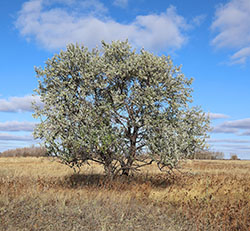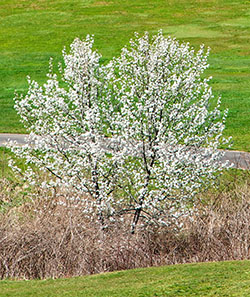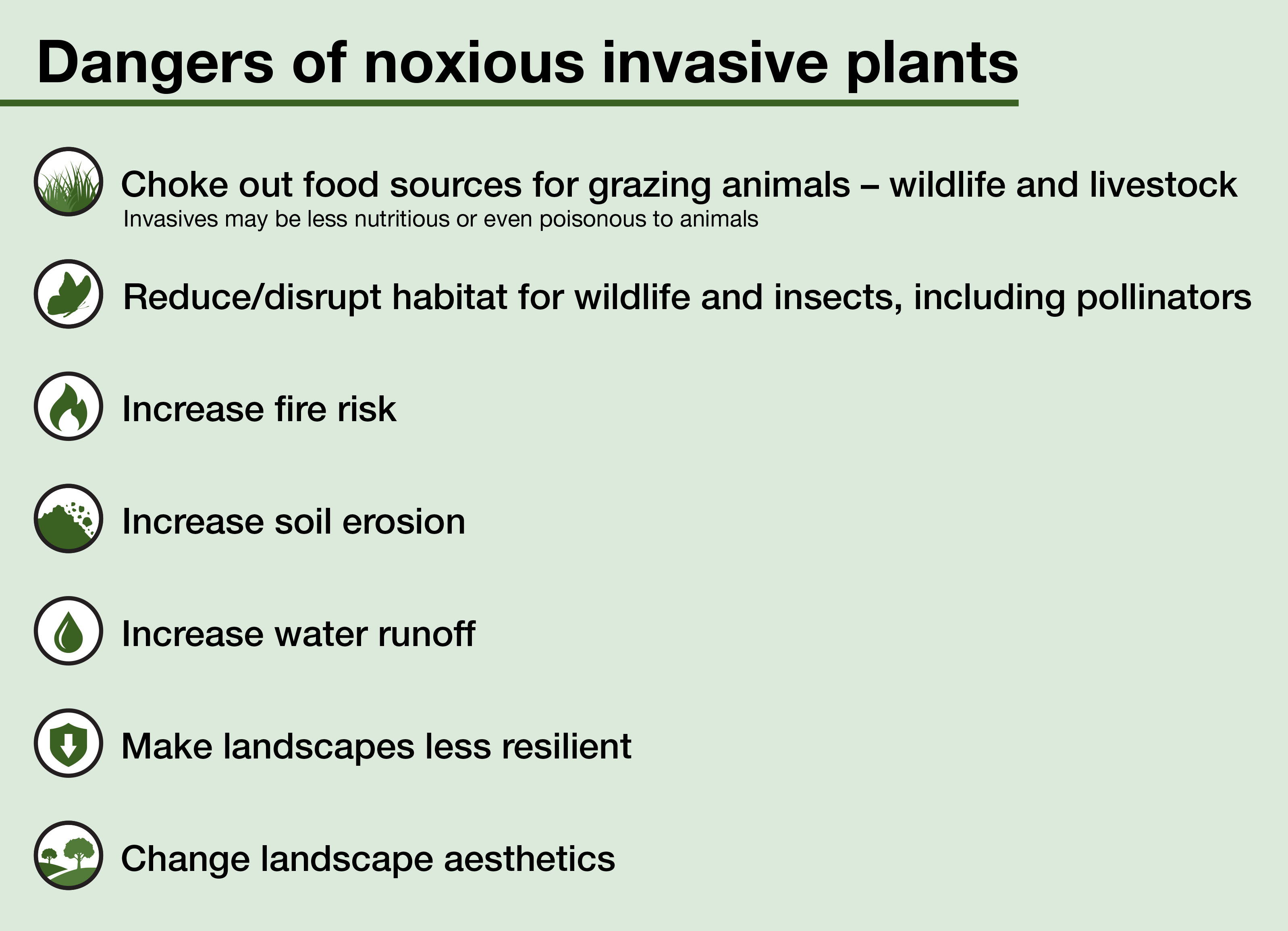Invasives and the Threat to Biodiversity

Invasive species are costly — in so many ways. The total economic cost of invasive species to the U.S. is estimated at some $120 billion a year. That includes vertebrates, arthropods and plants.1 The cost for ranchers alone to control invasive plants may be as much as $5 billion per year,2 and on public lands, costs also extend to taxpayers. But perhaps the greater cost of invasive species is the damage they do to ecosystems.
Invasive plant species can promote faster erosion and water runoff. They can restrict grazing opportunities for livestock and wildlife. They can make land more hospitable to wildfires — or less resilient when one occurs. Where invasives move in, beneficials are choked out. Animals and pollinators lose precious habitat. Consequences may be felt years and decades into the future.
An invasive plant is any that is not native to the United States. According to some estimates, “Invasives could make up anywhere from 8 to 47% of total flora in the U.S.” with as many as 15% of these causing severe harm.1
Some of these invasives were introduced purposefully, only to cause a series of unintended consequences. Tree species like Russian Olive and Callery Pear, brought in as ornamentals, have displaced native vegetation. But they have also been in the U.S. for so long, they themselves have become difficult to extract in parts of the environment, serving as habitat for some species.1
 |
 |
| Russian Olive | Callery Pear |
Of course, it is not only wildlife that are negatively affected in the landscapes where invasive species spread. For people, western rangelands are sources of income, recreation and natural beauty. When areas are overtaken by invasive plants, they also become less hospitable to ranchers, residents and tourists.
Like the plants themselves, the issue of how to manage these invaders can be a tangled mess.

Invasives are so problematic because they threaten biodiversity. Ecosystems are delicate, with each organism, down to microbes in the soil, playing an important role in keeping the system balanced and healthy. Invasive plants disrupt that balance. Humans are forced to intervene, which, if not done properly, can throw the system even more off balance.
In rangelands and pastures, land managers may face just a few invasives that need to be controlled. This is different from row crops, where farmers are battling many different weed species in a given season. The extra challenge with rangelands and pastures, however, is that invasive weeds often come along with desirable species. Selective removal of the noxious invader, therefore, becomes of paramount importance.2
Without an approach that seeks balance and protects beneficials, the cycle of invasives becomes perpetual, as does investment in dollars and labor to keep them at bay.
Integrated pest management (IPM) gives land managers a framework for making decisions to control invasives in a way that balances economics and ecology. In an IPM approach, mechanical, cultural, biological and chemical controls are often used in combination. The value of an integrated approach is that it isn’t solely focused on wiping out the noxious weed, which often just leaves room for other invasive species to become established.2
An IPM approach recognizes that controlling invasives and ensuring presence of more beneficial vegetation is a long game. Rather than focusing on the removal of specific weeds or invasives, IPM is focused on the ecosystem. An IPM approach is particularly ideal for rangelands and pastures because of the size and ecological diversity of these areas, the complexity that invasive species can introduce and the potentially high costs of controlling invasives over such large areas.2
Within an IPM context, there are several factors land managers can consider in choosing control methods. Some combinations of controls will be more effective on certain noxious species than others. Selection of the control method may also depend on the extent of the invasion. Whenever possible, it’s important to gain control over invasives early to reduce ecosystem damage.

Where warranted, herbicides can be an effective and responsible option for control of noxious invasives in rangelands and pastures. Herbicide use can often be more economical and efficient than mechanical removal. A key factor to consider in using herbicides in an IPM approach is selectivity of the herbicide. A selective herbicide will maintain populations of beneficial vegetation, rather than creating a sterile landscape where invasives are simply more likely to fill the void.
Effective control of noxious, invasive weeds requires looking at the issue holistically—to consider strategies that look at the entire spectrum of the issue, from prevention to long-term management. A comprehensive approach, including factors like these, facilitate long-term success:2
Rangelands and pastures are complex landscapes, and the role of land managers is to keep them that way. Diverse landscapes are healthy, providing plenty of opportunities for grazing and habitat, and enhancing landscape resiliency in the face of natural challenges, like fires, droughts and floods. Invasive, noxious weeds threaten all of this complexity. The right approach is one that removes the invasive threat without harming biodiversity. Getting there requires an integrated philosophy, one that uses the principles of IPM, but also includes prevention, education, stakeholder involvement and long-term commitment. With a holistic approach like this, land managers can make use of many different kinds of interventions, responding to a complex environment with a comprehensive strategy.
1 Norris-Tull, Delena. Management of invasive plants in the western USA. July 2020. https://www.invasiveplantswesternusa.org/costs.html
2 DiTomaso, Joseph M., Robert A. Masters and Vanelle F. Peterson. “Rangeland Invasive Plant Management.” Rangelands, 32(1) (2010): 43-47. https://doi.org/10.2111/RANGELANDS-D-09-00007.1
Sharing innovative research, success stories and tips with invasive plant managers.